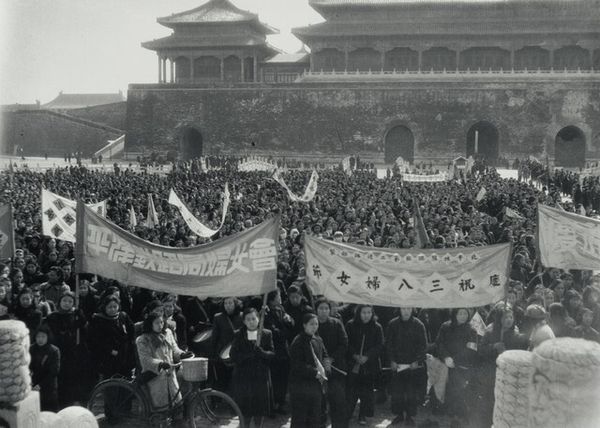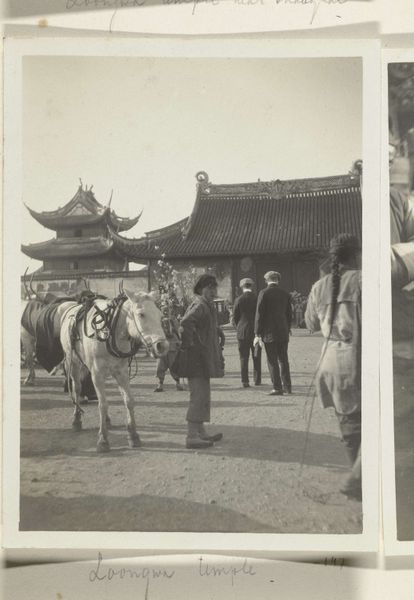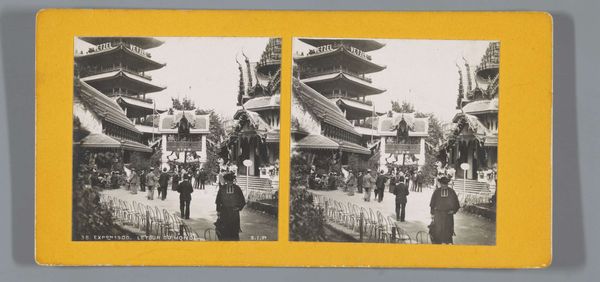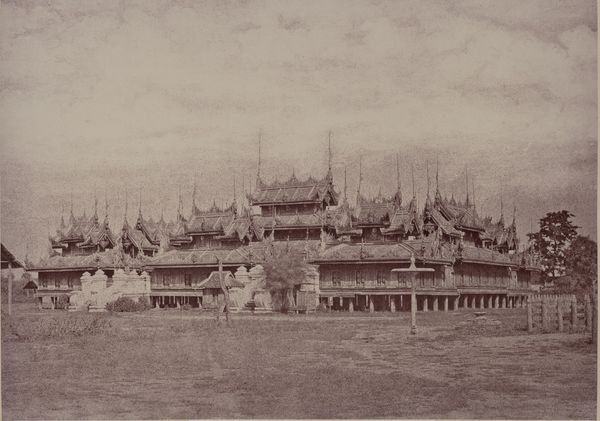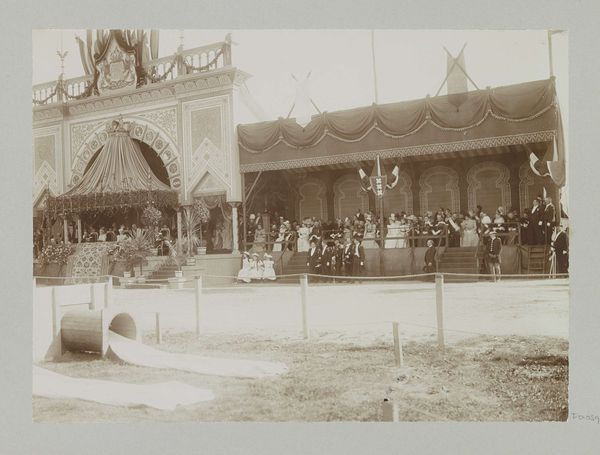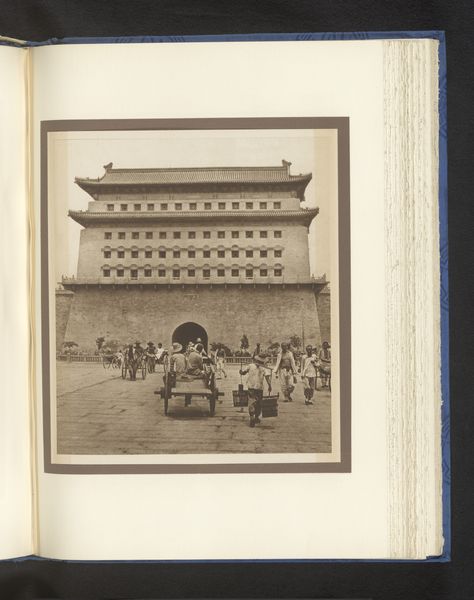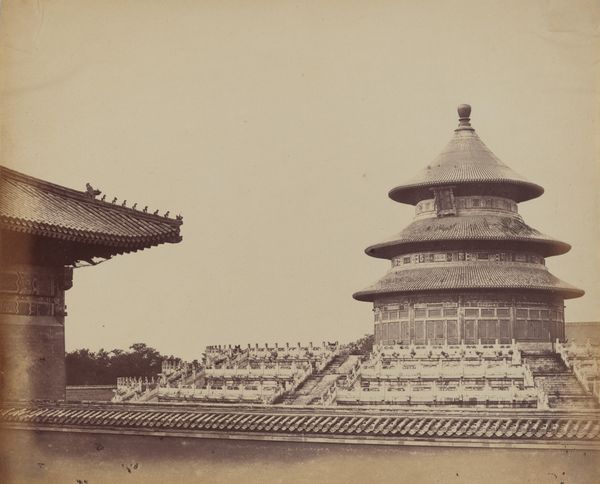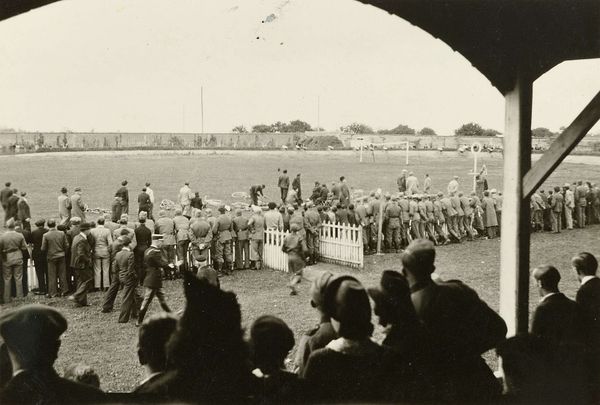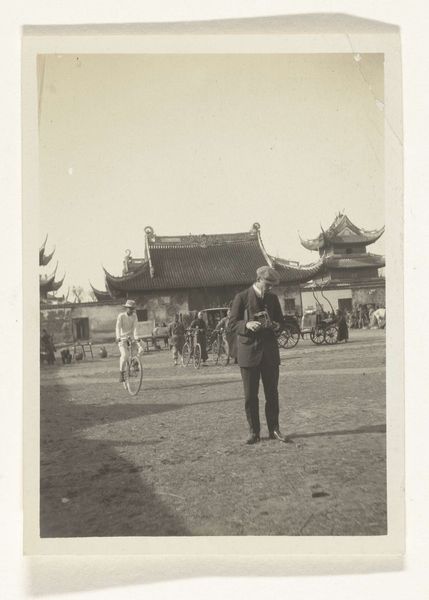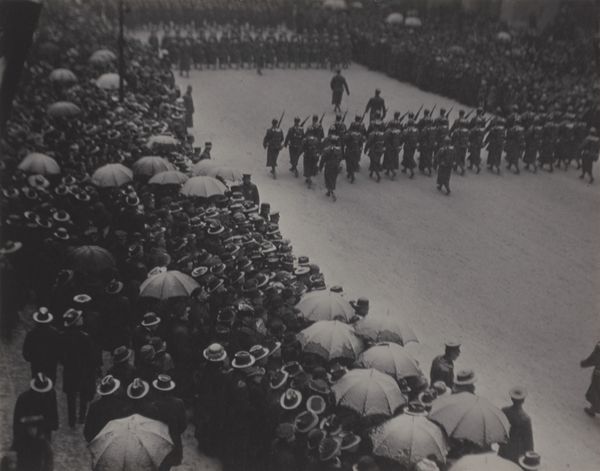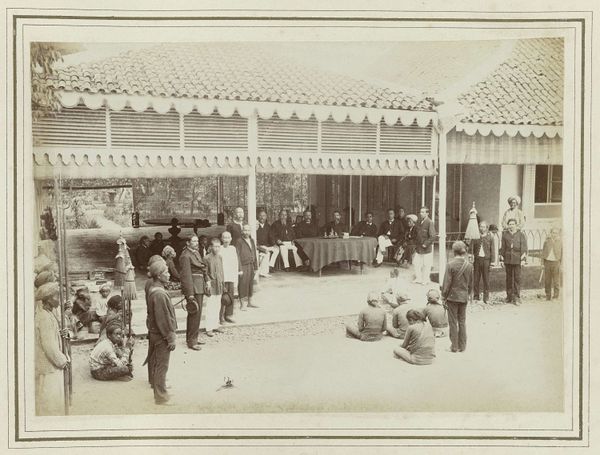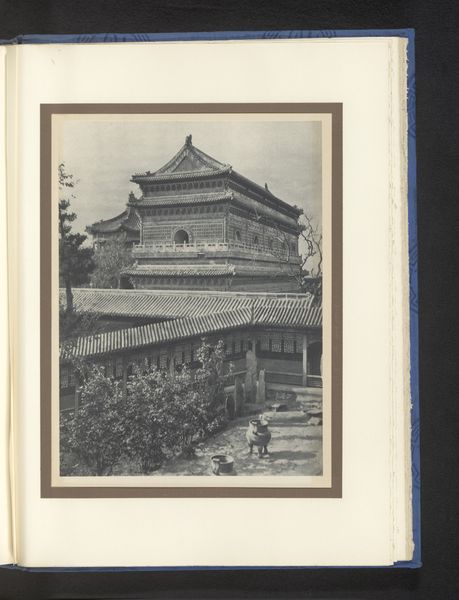
Dimensions: image: 16.4 × 23.9 cm (6 7/16 × 9 7/16 in.)
Copyright: National Gallery of Art: CC0 1.0
Curator: Henri Cartier-Bresson captured this image, "Civilian Militia, Forbidden City, Beijing, China" in 1948, a powerful scene from a pivotal year. Editor: It feels so monumental and strangely intimate all at once. The sheer scale of the Forbidden City is obvious, but the monochrome and somewhat grainy quality almost makes it feel like I’m peering into someone’s memory. A procession of ordinary souls against ageless stone. Curator: Indeed. Considering its materials helps understanding this image; the silver gelatin print would have been carefully developed, an inherently reproducible medium, democratizing the image, making it accessible for widespread circulation and commentary, fitting for a photograph that touches on post-revolution China. Editor: Absolutely. I'm captivated by how the rigid architectural lines, all imperial authority and permanence, contrast with the fluid movement of the crowd. There is an almost mournful quality to this shot, do you perceive that, as well? Curator: Well, beyond aesthetic emotions, I see social implications. This "Civilian Militia," most likely workers or peasants organized by the burgeoning communist state, occupying what was once the emperors’ domain; The transformation of this once forbidden space. Editor: Right. But what also gets me is their collective anonymity. Each individual becomes part of a larger flow, all moving toward an unseen destination in perfect uniformity. Yet their being there is a statement. They have occupied a space they could have never accessed earlier. Curator: Precisely. This photograph documents a change in China's political, social, and physical space, one that reconfigures its urban plan. Editor: It's truly a phenomenal snapshot of transformation then, where history and humanity are not in a fight, but are entangled and enmeshed instead. Something eerie but beautiful too. Curator: Agreed. And perhaps that complex tension is precisely what makes this piece so lasting and potent as both history and image.
Comments
No comments
Be the first to comment and join the conversation on the ultimate creative platform.

